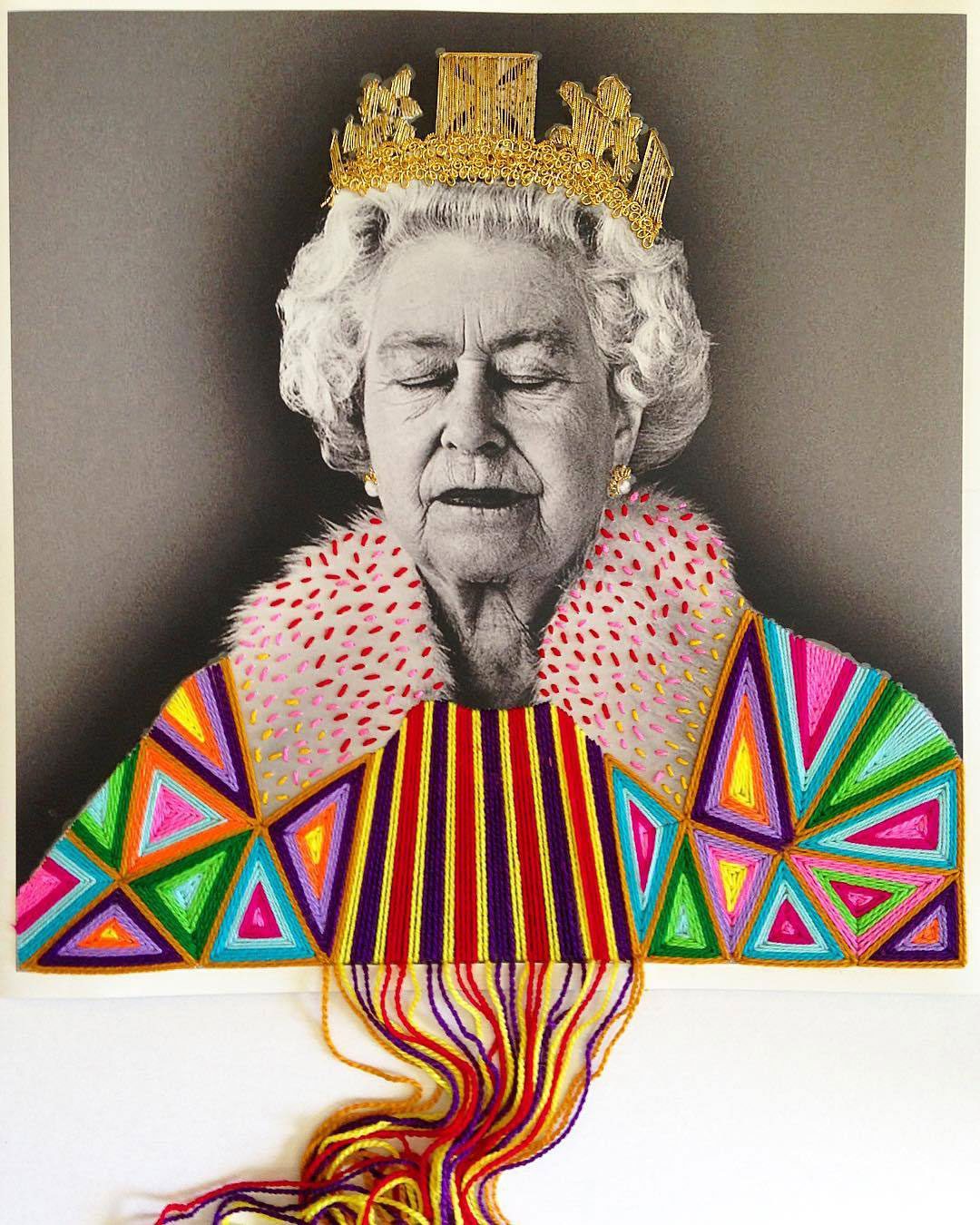Return to Learn with The Art of Education University
While you may already cover contemporary art in your curriculum, some teachers find it difficult to develop lessons around newer artists. One simple way to incorporate contemporary art is to pair a classic or modern artist from your existing curriculum with a living artist of today.
Introducing your students to contemporary artists helps them make connections with how artists of the past influence artists of today. Students will see that art is constantly evolving and that contemporary artists apply themes and techniques in new and interesting ways. You can have your students identify similarities and differences in writing or as a class discussion. Venn diagrams are a great learning tool that translates easily to remote learning.
5 Artist Pairs Who Bridge the Classic with the Contemporary
1. Kehinde Wiley and Titian
If you already teach about artists of the Italian Renaissance, like Titian, you can pair his work with the portrait paintings of contemporary artist, Kehinde Wiley. This is an excellent pairing to begin with as Wiley references the pose and expression of Titian’s The Penitent Mary Magdalen (1555-1565) in his portrait, After Titian’s “The Penitent Mary Magdalen” (2009).
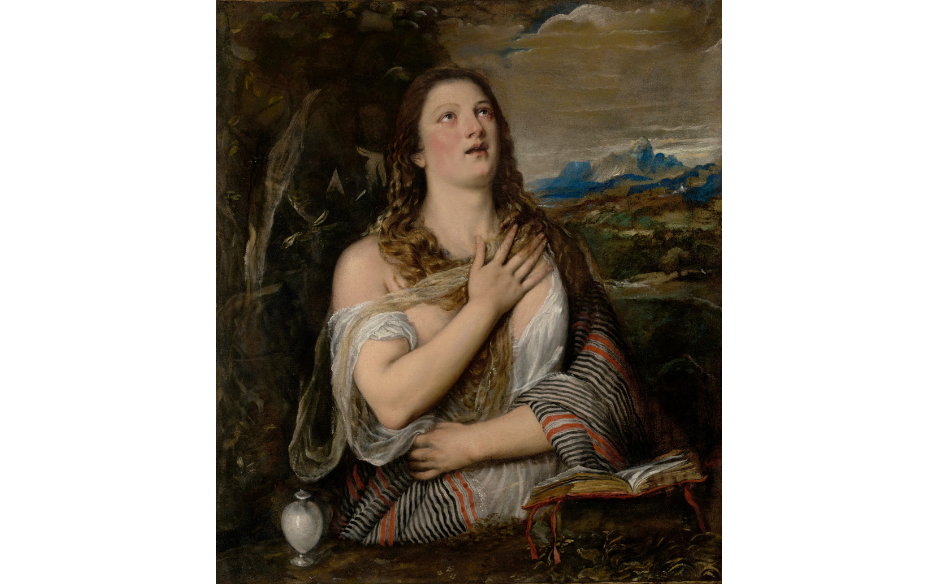
Students will quickly identify how the figures are posed similarly. They will also note how the two pieces are different. The background of Wiley’s portrait is a floral pattern, while Titian’s portrait background has a natural landscape. The figures are male and female and are dressed in clothing, reflecting their time and place.
Using their Venn diagram, students can form an opinion about each work. Ask students to support their opinion with reasons why they think that way. Once students have analyzed the artists’ portraits, they can move on to an artmaking project of their own.
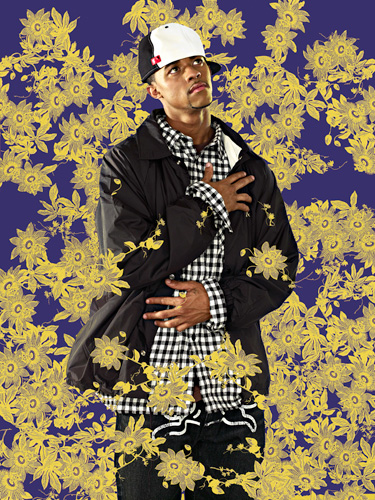
If you already have a project that ties in with the Italian Renaissance, continue with it, but refer to how Wiley’s process included changes in style and pattern. Students may draw a portrait in a classic pose, but with contemporary fashion and an intricate background pattern similar to Wiley.
You could also have students recreate an Italian Renaissance painting as a photograph. This would work particularly well for remote learning. If you have older students with access to design software, they could easily create a digital background and input their Renaissance-inspired portrait.
2. Lisa Brice and Pablo Picasso
Many art teachers are familiar with teaching Pablo Picasso and his various artistic periods, such as Cubism, The Rose Period, and The Blue Period. While teaching The Blue Period, teachers can encourage students to work in a monochromatic color scheme using only the color blue and a range of tints and shades.

Similar to Picasso’s use of the color blue is contemporary painter and visual artist, Lisa Brice. Her paintings reference her experiences growing up in South Africa, and the time she spent living and working in Trinidad.
Again, students can compare and contrast these two artists’ works. Ask students to reflect on how Picasso and Brice may see the world differently and communicate their perspectives through their artwork. While Picasso applied the color blue to represent his own sadness, Brice uses the color blue in reference to Trinidad’s carnival traditions. You can provide students with some contextual information about each artist. Students can make inferences from what they learn.
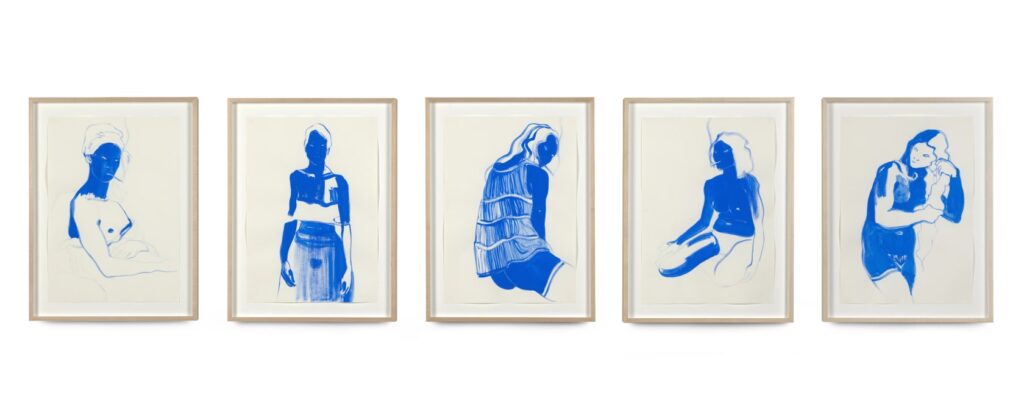
Once students have been introduced to the artists’ life and work, they can create their own monochromatic drawings or paintings. Review what a value scale is and how to create various shades and tints using different art materials. Have students create a monochromatic value scale in the hue of their choice. Encourage them to choose a color that can communicate emotion or meaning in the same way as Picasso and Brice.
3. Kadir Nelson and Norman Rockwell
As art educators, we want to show students that many artists create work reflecting and critiquing the world around them. Art is not simply about technique and aesthetics, but can also have a message and make a profound impact on popular culture.
The work of Norman Rockwell and his illustrations for The Saturday Evening Post have become famous as snapshots of daily life, as well as statements about social and political issues. The Four Freedoms (1943) series of oil paintings refer to President Franklin D. Roosevelt’s 1941 State of the Union speech. The Problem We All Live With (1964) is considered to be an iconic image of the Civil Rights Movement.
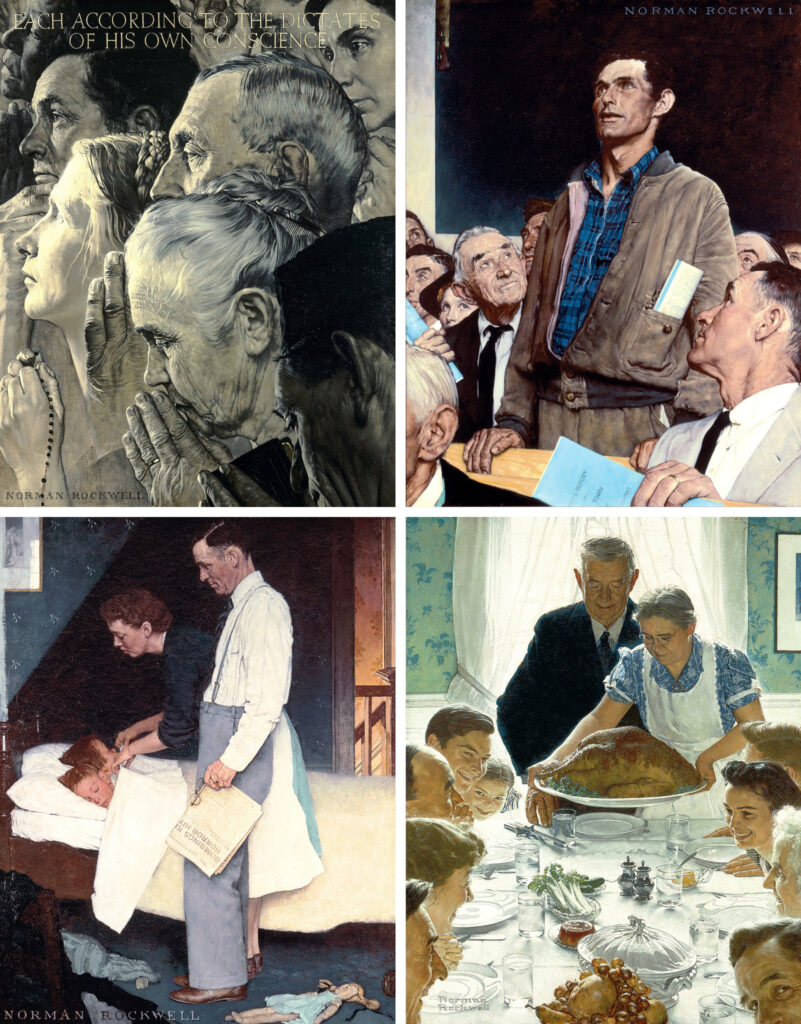
Contemporary artist and writer, Kadir Nelson, has similarly used his artwork to honor the life of George Floyd and depict the social uprising and protests of 2020. His work has been featured on the cover of The New Yorker and Rolling Stone.
Students can analyze these works individually and write or discuss their own thoughts and opinions about how each piece reflects the political and social climate of its time. They can compare and contrast the two artists’ works. They can research speeches, essays, and articles that speak to the topics the artwork is referencing.
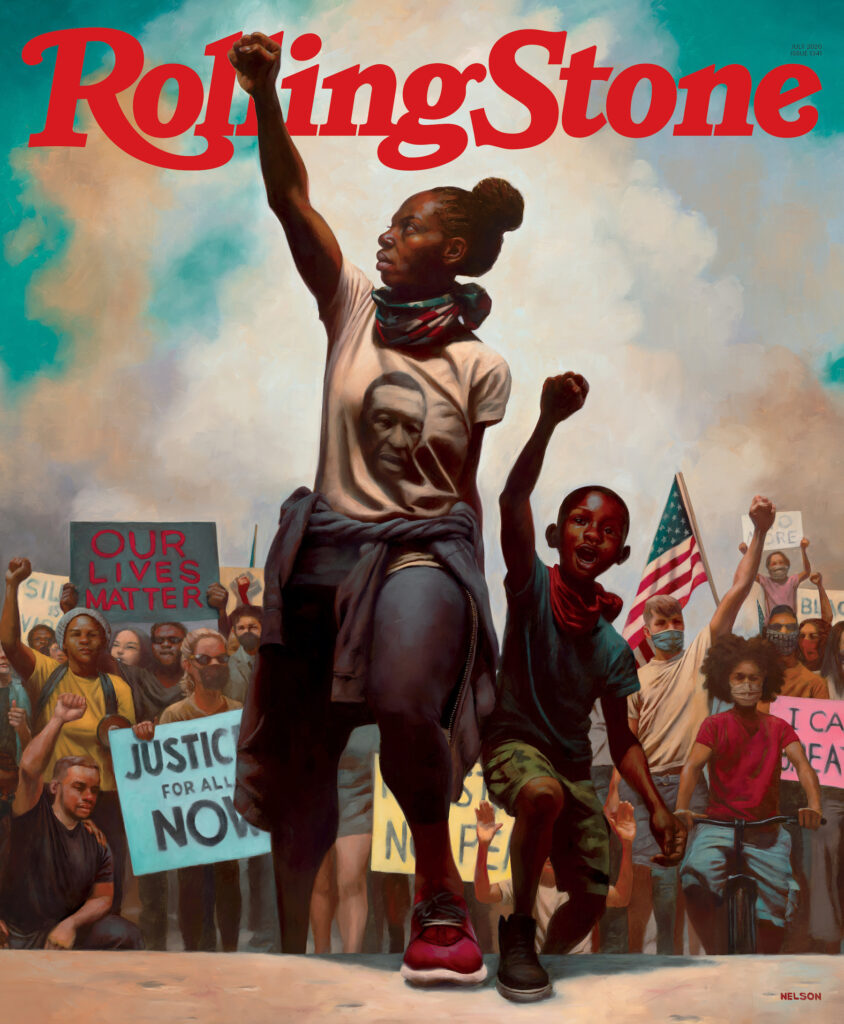
Students can create their own magazine or newspaper illustrations concerning issues they are passionate about. Ask students to consider the big topics they discuss with peers, or at home with their family. Ask them to think about how they would create a cover illustration to visually represent that topic in a way that is universally understood. They can use photography, magazine clippings, design software, drawing or painting materials, etc. to create a finished cover.
4. Eyez and Keith Haring
Keith Haring is known for using his own language of iconic symbols and imagery to create instantly recognizable work. From his drawings in the subways of New York City to public murals all over the world, Haring used semiotics to create his own visual language.
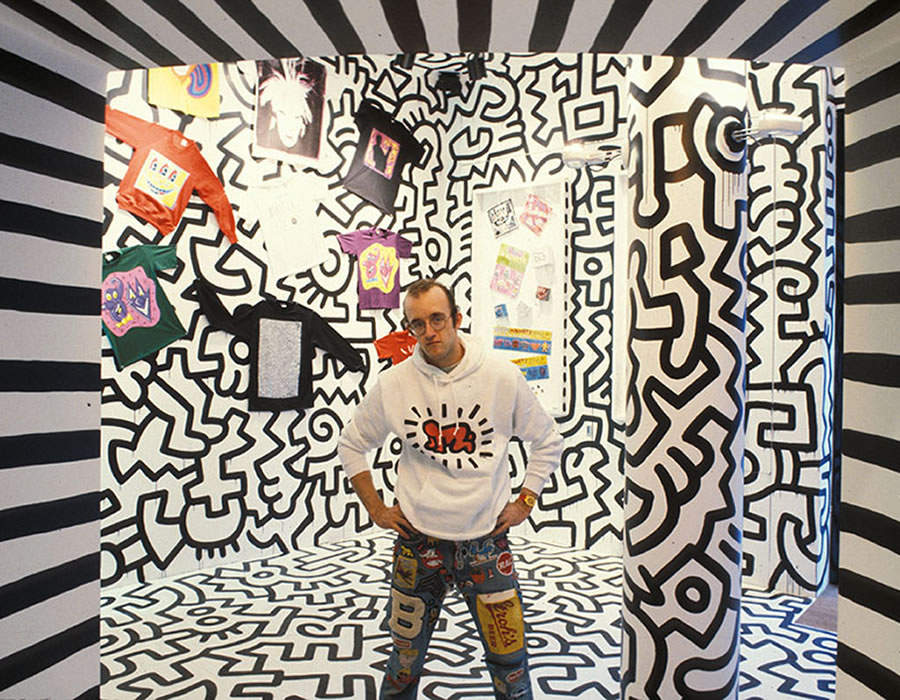
Peat “Eyez” Wollaeger is a contemporary artist in the St. Louis, Missouri area. He uses his signature eye design to create colorful characters and street art. He uses his art to bring objects to life on the street and believes that “Eyez are the window to your soul.”
Return to Learn with The Art of Education University
Similar to Haring, Eyez’s work is not limited to street art. He uses his designs to create prints, stickers, clothing, and household objects. This is a great example to share with students to have them think about different design applications for their artwork. Many of today’s contemporary artists market themselves with merchandise and social media in addition to the original art they create.

Students can compare and contrast these two artists and the work they’ve created as street art as well as producing prints and merchandise. You can have discussions about why an artist would want to reach the masses rather than the art elite. Students can make their own signature symbol or visual vocabulary, similar to Haring and Eyez. They can sketch ideas for their own line of merchandise that somehow incorporates their symbols.
5. Victoria Villasana and Andy Warhol
It’s safe to say that Andy Warhol was obsessed with all things celebrity. He created many iconic prints of notable figures like Marilyn Monroe, Queen Elizabeth, Muhammad Ali, and Michael Jackson, to name a few. These prints and paintings were not realistic depictions, but colorful abstractions unique to Warhol’s process.
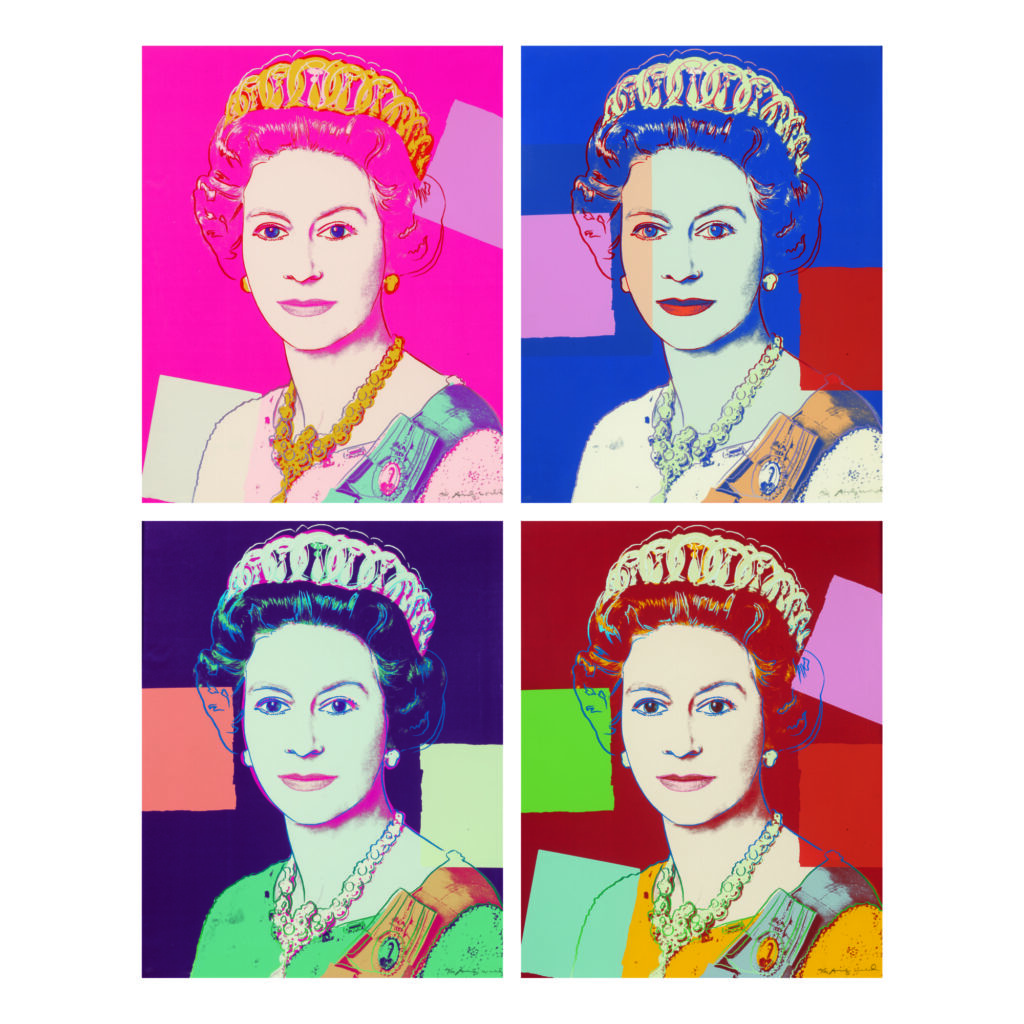
Victoria Villasana is a textile artist born in Guadalajara, Mexico. She creates embroidery patterns on top of images. She places her artwork in the streets and has become well known for her rebellious femininity and acute cross-cultural imagery.
Many of Villasana’s embroidered images feature celebrity portraits like David Bowie, Maya Angelou, Frida Kahlo, and Rihanna. The colorful yarn is left uncut and hangs below the image frame.
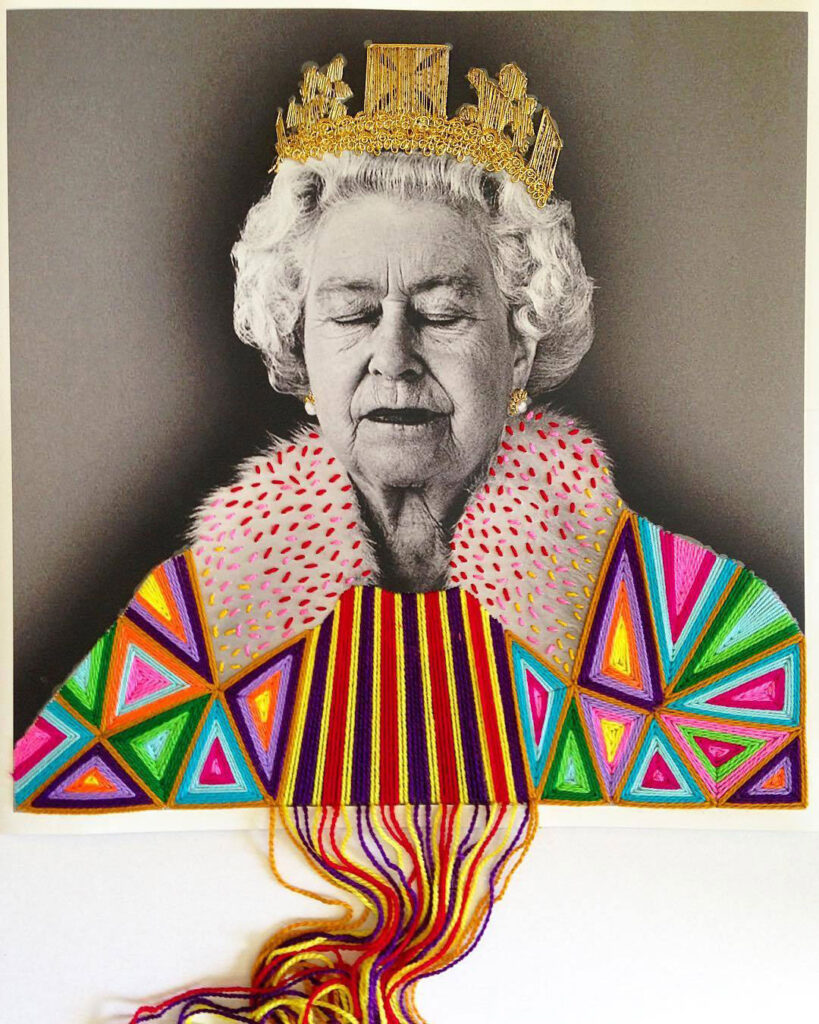
Both artists utilize image reproductions of celebrities but use their artistic style and vision to alter the images with bright colors. Students can compare and contrast the artists’ work and processes. Students can then enjoy altering images of their own celebrity heroes with various art supplies to breathe new life to the original portraits.
Final Thoughts
Compare and contrast activities give students a great opportunity to look closely at the artists they’re studying. In order to identify similarities and differences, students will need to analyze the artist’s use of elements of art and principles of design. You can encourage them to use some of their art vocabularies in their critique of the artists’ works.
Whether you are teaching in-person or remotely this school year, these artist pairs can provide some great learning and project inspiration for your students. Don’t be afraid to include more contemporary artists in your curriculum! Look for natural connections to what you already teach and show students how art is constantly looking to the past to create a new future.
How do you use Venn diagrams in the art room?
What contemporary and classic pairs have you compared in your curriculum?
What contemporary artists have you discovered recently that you hope to bring into your teaching?
Magazine articles and podcasts are opinions of professional education contributors and do not necessarily represent the position of the Art of Education University (AOEU) or its academic offerings. Contributors use terms in the way they are most often talked about in the scope of their educational experiences.
